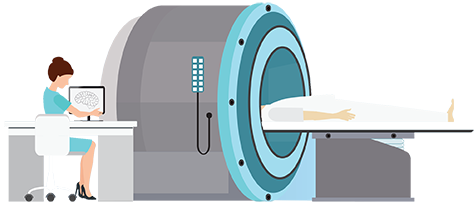

An angiogram is a test that Radiologic Technologists perform using x-ray technology to produce images of blood vessels. Often this test is used to study narrow, blocked, enlarged, or malformed arteries or veins in the body including your heart, abdomen, brain, and your legs. A test is called an arteriogram when the arteries are studied and a venogram when the veins are studied.
A liquid dye is injected through a thin small flexible tube called a catheter to create the images. The catheter is then put into an access point which is usually in your groin, your arm or less commonly a blood vessel in another location. This “dye” which is properly called a contrast, makes the blood flowing inside the blood vessels visible on an x-ray. The contrast is eliminated through your kidneys and your urine later. Angiography is good for diagnosing a variety of vascular conditions such as peripheral artery diease (PAD), aneurysms, renovascular conditions, aortic arch conditions which are problems in the arteries that branch off the aorta. Also malformed arteries and problems with your veins, such as deep venous thrombosis (DVT) or blood clots in the lungs called pulmonary emboli.
Also a doctor can treat a problem during an angiogram like dissolve a clot that they discovered during the procedure. They may also perform an angioplasty and stenting procedure to clear blocked arteries. Angiograms can help your doctor plan operations to repair the arteries for more extensive problems as well.